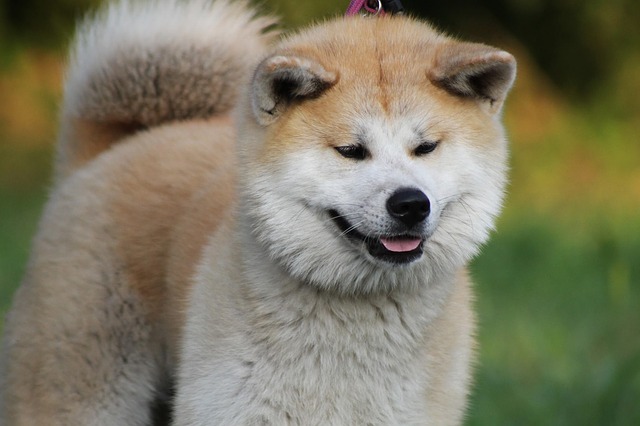The Akita, with its dignified presence and unwavering loyalty, has captured the hearts of dog enthusiasts around the world. Originating from the mountainous regions of Japan, this noble breed is well-known for its thick double coat, which provides excellent insulation against cold temperatures. However, as the popularity of Akitas grows in warmer climates, a pressing question arises: Can Akita live comfortably in hot weather?
In this blog post, we delve into the fascinating topic of Akita’s adaptability to hot climates. We’ll explore the unique characteristics of this remarkable breed, shedding light on their natural abilities to cope with warmer environments and offering practical tips to ensure their well-being during the scorching summer months.
Akitas, historically bred to withstand harsh winters and rugged terrains, possesses a dense and plush coat that provides insulation in cold weather. This magnificent coat, while undoubtedly a defining feature of the breed, raises concerns when it comes to its comfort in hot climates. As responsible pet owners, it’s essential for us to understand the challenges and take necessary measures to ensure that our beloved Akitas thrive, even in warm weather.
While it’s important to note that every dog is unique and may have different tolerance levels for heat, understanding the breed’s general tendencies and taking proactive steps can significantly contribute to their well-being and happiness in warm climates. With a little knowledge and preparation, you can ensure that your Akita remains healthy, comfortable, and able to enjoy the summer season to the fullest.
So, whether you’re considering bringing an Akita into your home in a hot region or you’re already a proud owner of this magnificent breed facing the challenges of warmer weather, this blog post will serve as a valuable resource.
By understanding the specific needs of Akitas and implementing appropriate measures, you can provide them with a safe and enjoyable environment, ensuring their happiness and longevity in even the hottest of temperatures. Get ready to equip yourself with the knowledge needed to support your Akita’s well-being in hot weather conditions.
How to Keep an Akita Cool in Hot Weather?
The Akita originates from a cold climate and is not suited for hot weather. But, in summer or unexpected hot weather, keeping cooling tactics is essential.
If not employed, your dog could develop heatstroke and dehydrate. Here are a few ways to keep an Akita cool in hot weather:
1) Trim the Coat
An Akita naturally has a double coat that sheds when seasons change. But if hot weather arrives in-between season changes, seasonal shedding does not occur. In this case, you can try trimming the outer coat slightly. Do not shave your Akita!
2) Provide Shelter From the Sun
Staying in the sun for too long can aggravate your dog’s health.
Throughout the day, a shady shelter should be provided. However, if temperatures climb and become unbearable, indoor shelter is mandatory.
Staying in the sun can cause dehydration and overheating.
3) Hydration is Important
Dogs drink a lot of water, but most of it is lost due to panting.
Unfortunately, dogs can only sweat through their noses and paws. A dog’s panting releases heat and regulates body temperature, helping him to cool down. Water is lost in the process.
Therefore, maintaining a full bowl of clean water is essential to keep your Akita cool.
3) Set Up a Kiddie Pool
Dogs that feel hot won’t mind cooling off. By cooling off we mean taking a swim or a soak!
Some dogs love water and will gladly cool off in the water, even if it’s just a puddle of water. If you know your dog is struggling to keep cool, set up a kiddie pool in the backyard.
4) Regularly Coat Brushing
Regular brushing can help an Akita remove dead and damaged hair, decreasing the load and volume of its coat. It can at times help air to penetrate the thick coat to some extent.

Akita Heat Regulation Mechanism
Like most dogs Akita has a normal body temperature of 101.5℉ (38.5℃) Beyond this, dogs have limited ways to bring down their body temperature.
The ideal air temperature at which a dog does not have to expend energy to maintain normal temperature is called the ‘Thermoneutral Zone (TMZ)’.
For an Akita, the TMZ value should be 68℉ (20℃). Anything above 75℉ (24℃), would start to hassle an Akita.
How do Akita Regulate Their Temperature?
Dogs are renowned for panting, this activity is the most significant way Akita (and all dogs) keep cool.
Sweating is not possible since the only areas that sweats are the nose and paws. This usually means dogs are at increasingly high risk of overheating and having a heatstroke.
How Do You Know If Your Dog Is Too Hot?
Stopping an Akita from overheating requires you to identify the symptoms first. Here are ways to identify dehydration and overheating in Akita.
Signs of Dehydration in Akita
Water is essential for dogs, dehydration can cause severe issues and possible death. Here are the symptoms and signs of dehydration in dogs:
- Reduced urination
- Racing heartbeat
- Loss of skin elasticity
- Sunken eyes
- Dry and pale nose and mouth
NOTE: You can check skin elasticity by pinching the skin on the belly. If it does not return to its position immediately, your dog is dehydrated!
Signs of Overheating
When a dog becomes overheated, he is at risk of developing heatstroke. The signs of overheating are:
- Disorientation
- Heavy panting
- Excessive drooling
- Feeling hot to the touch
- Vomiting/Diarrhea
- Purple gums
Do Akitas Like to Cuddle? Why Doesn’t my Akita Like to Cuddle?
Natural Weather Conditions Suitable for an Akita
Akita originates from the snowy mountains of Japan.
These dogs have a double coat meant to withstand cold snowing conditions. It is said an Akita can withstand a temperature of -22℉ (-30℃).
Akitas are a dog breed that we commonly associate with snow. When Akita play in the snow, they don’t even look cold as it is their most suitable natural weather condition. Their double coat helps keep him equipped for the cold and snow.
During the summer, Akitas can shed or molt, this means the coat is shed to offer adaptation to the heat. But, when winter approaches, the coat would grow back.
Can I Leave My Akita Outside?
If temperatures exceed 75℉ (24℃) you should definitely not leave him outside without shade. You should instead be offering your dog a shelter to keep him cool.
Beyond 86° F (30°C), do not expect your Akita to be active or it can lead to heatstroke.
At this point, you should be keeping your Akita indoors with the help of an air conditioner.
During hot weather, observe your Akita for signs of dehydration and heatstroke. If nights surpass these temperatures, offer him a place indoors.
FAQs
Yes, an Akita can live in Florida.
Many Akita owners in Florida say that they keep their dogs indoors for most of the day. With AC and wet towels, your Akita will manage the heat. Also, make sure to keep a bowl of water always accessible to him.
An Akita has a double coat that aids in regulating temperature. If you shave your Akita’s coat, temperature regulation will be lost. Additionally, the coat may not grow back fast enough for winter. This will leave your Akita vulnerable to cold weather.
Shaving an Akita’s coat is never advisable, not even during shedding season. It may look like your dog needs help but shedding is natural. He is best left alone, although brushing and bathing can help.

